

What is kumihimo?
The different types of "narrow wares" — braids, bands, cords, ropes, etc. — are as numerous as the cultures which have been fashioning them for centuries, using techniques as simple as fingerbraiding and twisting and as complex as modern textile machinery.
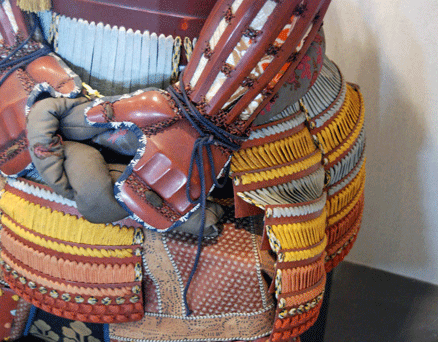
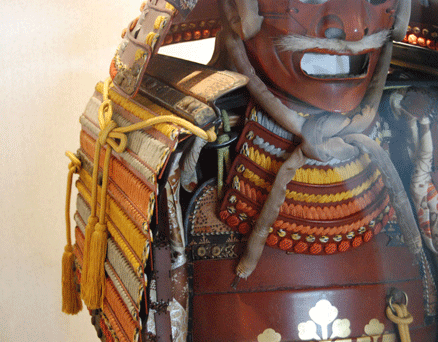 Kumihimo is the general name for a variety of Japanese techniques which date from around 550 C.E. The braids created by Japanese craftsmen served both ornamental and essential purposes, providing a means to fasten and decorate clothing; wrap knives & swords; hang banners, mirrors, and musical instruments; bundle carrying and storage wrappings and more. They were also an integral part of the unique Samurai armor, which was constructed of numerous laquered plates laced together with braids to form a protective covering. Construction methods were closely guarded secrets, passed from master to apprentice through the ages.
Kumihimo is the general name for a variety of Japanese techniques which date from around 550 C.E. The braids created by Japanese craftsmen served both ornamental and essential purposes, providing a means to fasten and decorate clothing; wrap knives & swords; hang banners, mirrors, and musical instruments; bundle carrying and storage wrappings and more. They were also an integral part of the unique Samurai armor, which was constructed of numerous laquered plates laced together with braids to form a protective covering. Construction methods were closely guarded secrets, passed from master to apprentice through the ages.
Braiding Equipment
The five basic kumihimo braiding stands are:
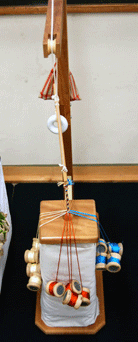
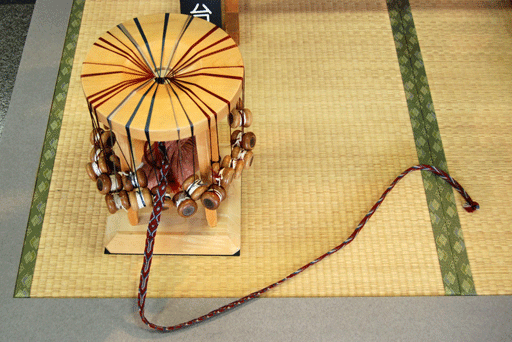
< Maru Dai
Kaku Dai >
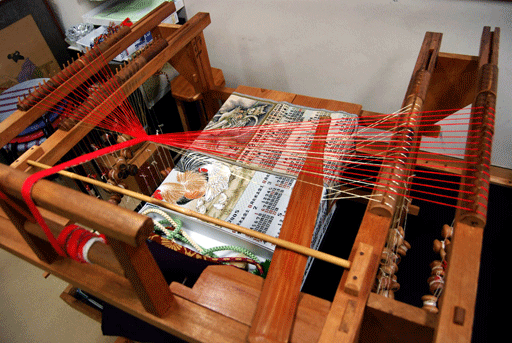
< Taka Dai
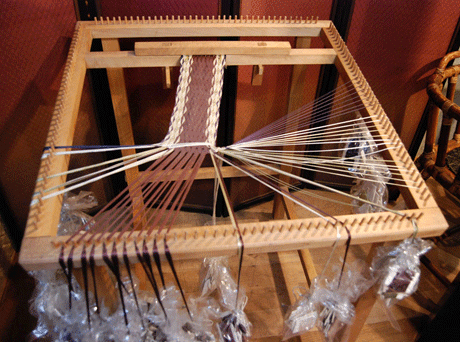
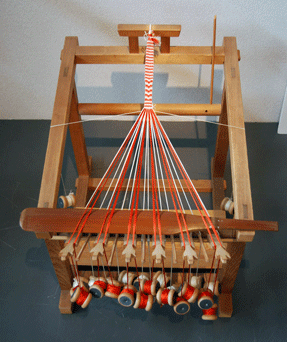
< Aya Take Dai
Karakumidai >
The Diversity of Kumihimo Braids
The five stands pictured above allow the production of an amazing collection of different braid structures. The maru dai can be used to create braids that are round, square, rectangular, hollow, spiral, flat, triangular and even pentagonal and half-round in cross section. Threads are held taut between weighted tama which hang from the outer edge of the kagami (mirror), and the counterweight underneath. The braid grows downward through the sloped hole in the center. In contrast, the braid grows upward on the kaku dai, where the completed portion of the braid is suspended above the tama, which are rotated to maintain the twist in the elements themselves. The karakumidai braid is strictly a twined structure, and great skill and patience is required to achieve the correct tension throughout the braid. The aya take dai is the only one of the stands to use a true weft, which is passed through sheds created by moving the tama from notch to notch on the wooden "feathers" at the front of the stand.
Taka dai braiding process is very similar to weaving, with one key difference: each element in the braid acts as both warp and weft in turn. Because the stress on the completed braid is borne by every element within the structure, it can be far stronger than a similar fabric with warp and weft. The illustration on the left below shows the path of the weft (green thread) through the warp (blue threads) in a traditional under two, over two twill fabric. Once the weft reaches the opposite edge of the warp, it returns with the same sequence, offset by one thread to create the weave. The same under two, over two sequence is used on the taka dai, but the braid is worked from the outer edge to the center. Once the thread has completed its turn as "weft", it takes its place at the end of the row on the opposite side of the taka dai to resume the role of a warp element, as seen in the illustration on the right.
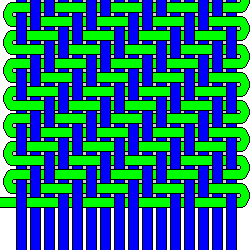
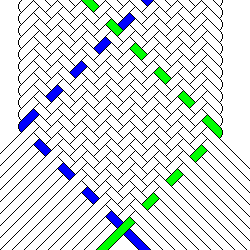
The range of structures along with the opportunities for varying fiber type, element size, element color and color placement offer a tremendous diversity of braids for the kumihimo enthusiast. It is this vast array of possibility that makes kumihimo such an exciting art. I invite you to explore the world of kumihimo along with me.
© 2011, Carol Miller Franklin. All rights reserved. Site Design by The CF2 Group